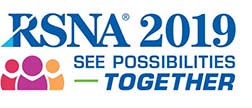

ParticipantsHansang Lee, Daejeon, Korea, Republic Of (Presenter) Nothing to Disclose
Helen Hong, PhD, Seoul, Korea, Republic Of (Abstract Co-Author) Nothing to Disclose
Hyun J. Kim, Seoul, Korea, Republic Of (Abstract Co-Author) Nothing to Disclose
Hwa Kyung Byun, Seoul, Korea, Republic Of (Abstract Co-Author) Nothing to Disclose
Jinsil Seong, MD, PhD, Seoul, Korea, Republic Of (Abstract Co-Author) Nothing to Disclose
Jin Sung Kim, PhD, Seoul, Korea, Republic Of (Abstract Co-Author) Nothing to Disclose
Junmo Kim, Seoul, Korea, Republic Of (Abstract Co-Author) Nothing to Disclose
hlhong@swu.ac.kr
hlhong@swu.ac.kr
CONCLUSIONOur method can be applied to construct the imaging feature-based staging system which can predict the survival rate more accurately than the conventional TNM staging. (This work was supported by Radiation Technology R&D program through the NRF of Korea (NRF-2017M2A2A7A02070427))
BackgroundPrediction of survival period of liver cancer patients is an important task for treatment and therapy planning of patients. However, most of the current survival prediction depends on clinical information such as tumor size and metastasis. In this work, we propose a survival prediction system for liver cancer patients using quantitative imaging features including texture and shape features of tumors. In addition to the validation of the feasibility of imaging features for survival prediction, we analyze the key imaging features significantly affecting the survival of patients.
EvaluationOur method was evaluated on a CT dataset acquired from 171 liver cancer patients with survival period recordings. All tumors were manually segmented by the clinical expert. From the tumor ROI images, the quantitative imaging features of 128-dimensions consisting of 119 texture features and 9 shape features. The Cox proportional hazard function was then fitted with those imaging features and survival periods. From the fitted Cox model, the features with the highest exponent weights were considered as key features for the survival. In experiments, the survival function was marginally fitted with the imaging-feature-based Cox model, which indicates the imaging features have a potential for survival prediction. In addition, the texture features including LBP and GLRLM low run features and the shape features including solidity and eccentricity were selected as the key features for the patient survival.
DiscussionThe proposed method investigates the usefulness of quantitative imaging features instead of conventional patient information to predict time-variant survival in liver cancer patients. Throughout the Cox model fitting with imaging features, it was observed that the entropy-related texture features and size-related shape features have a significant effect on the prediction of the survival period.